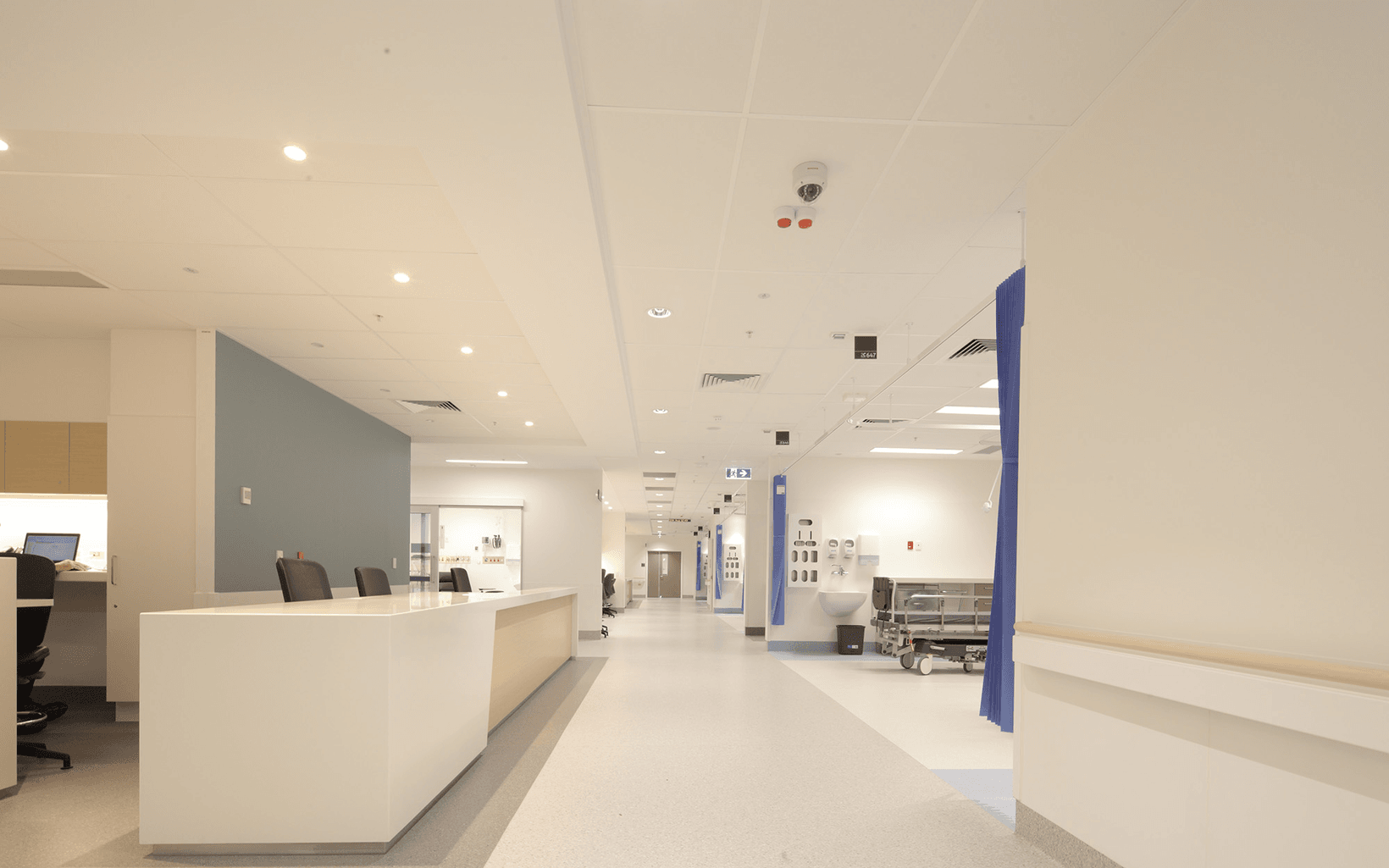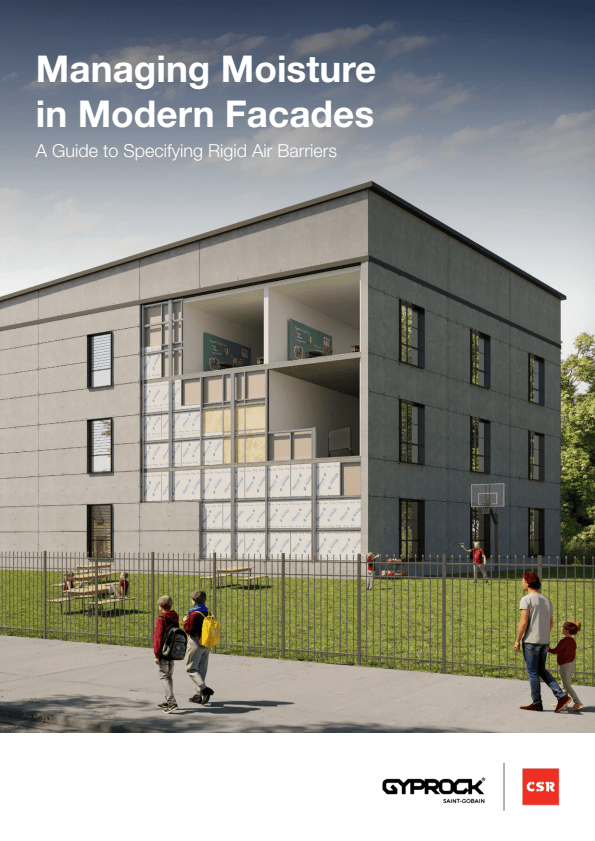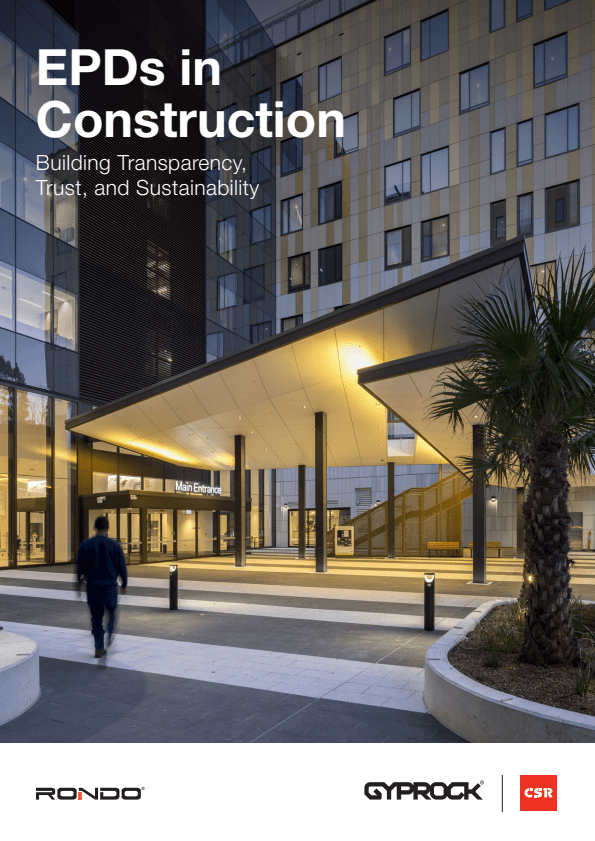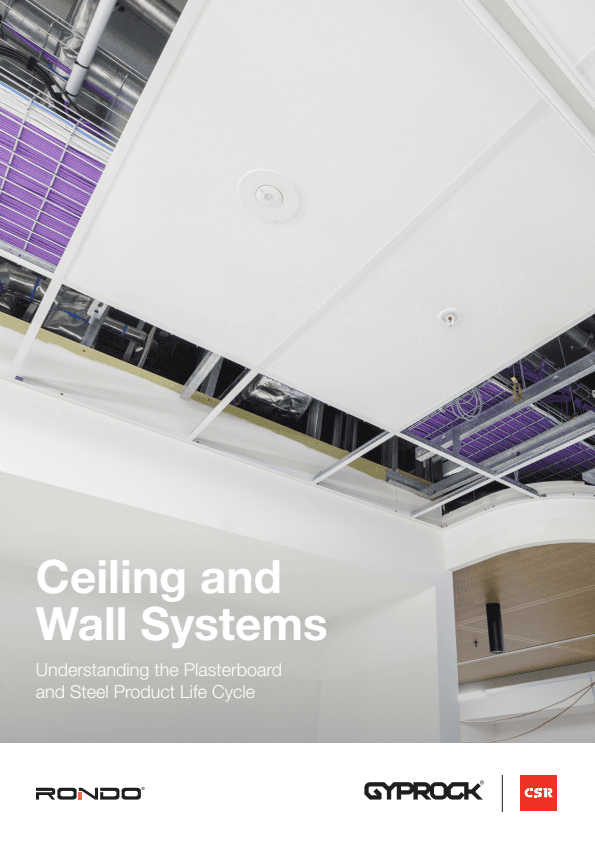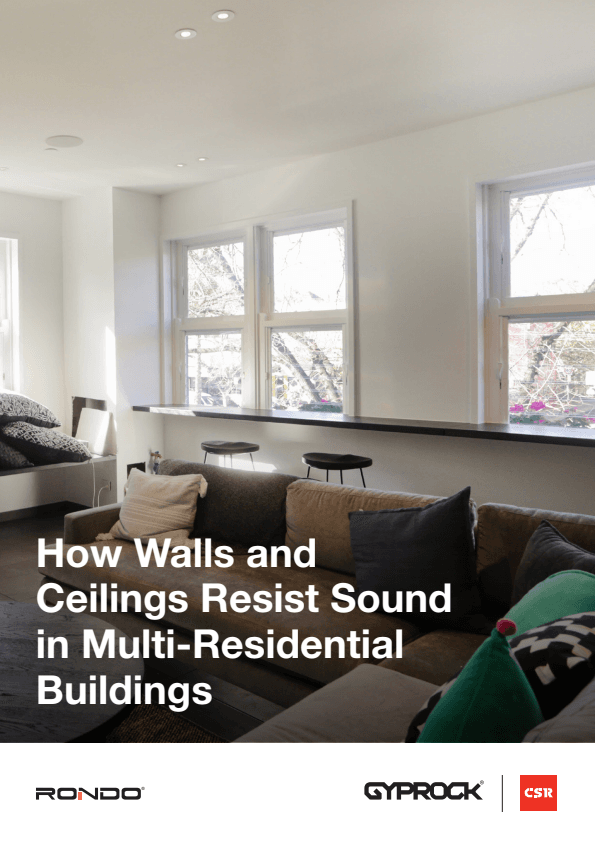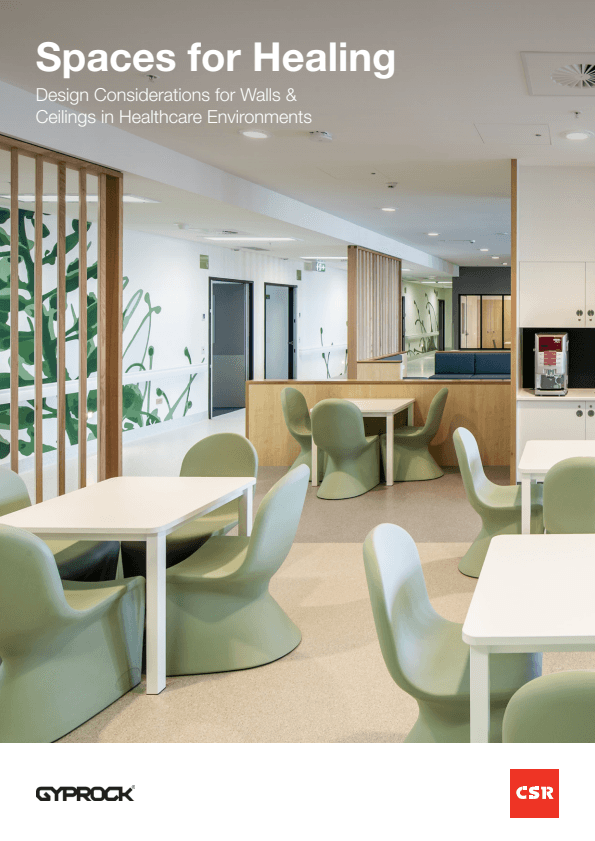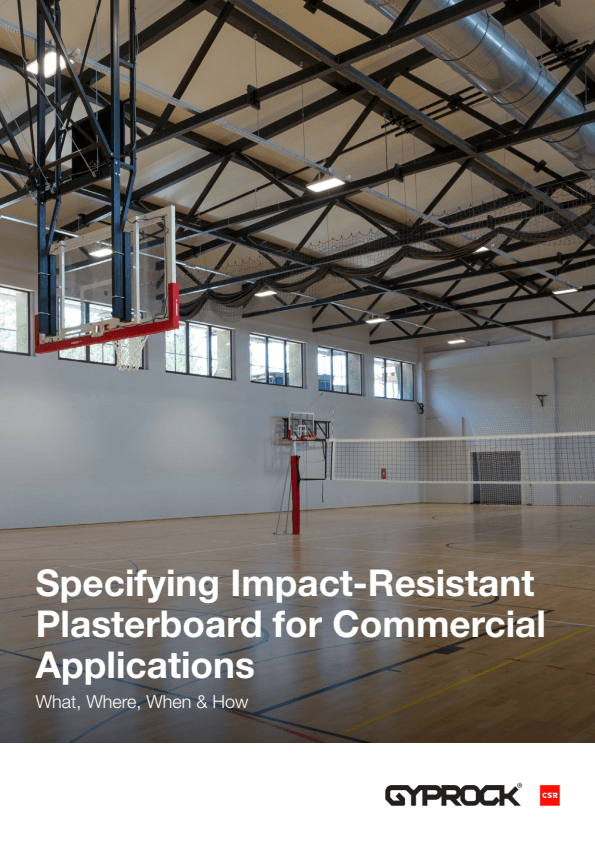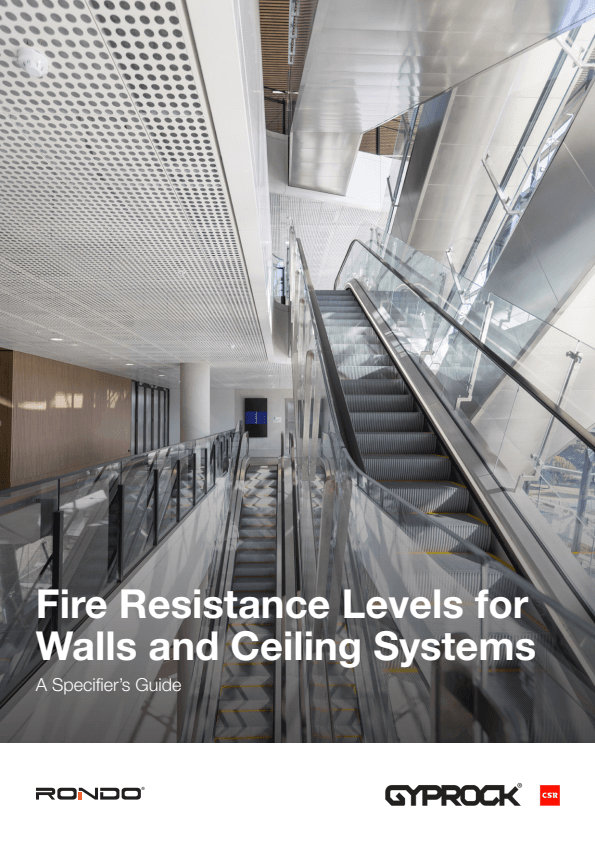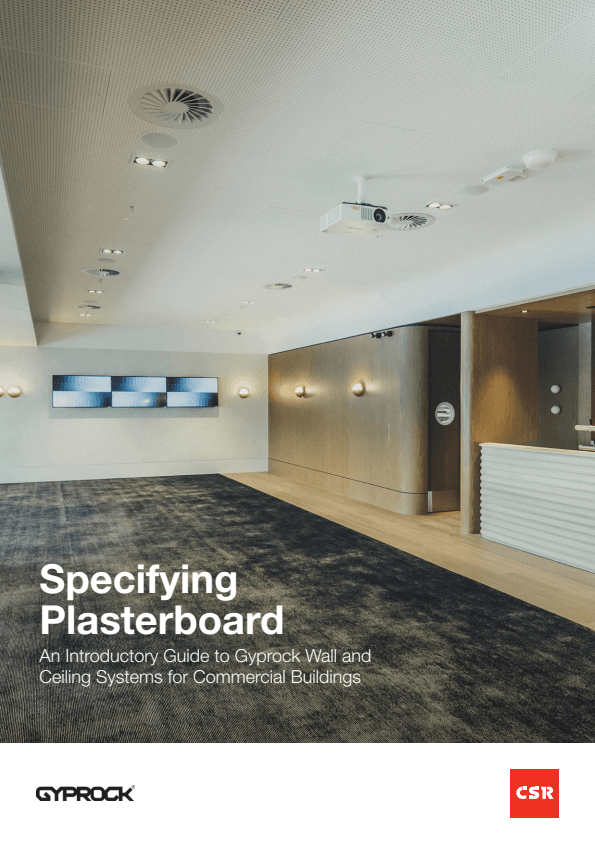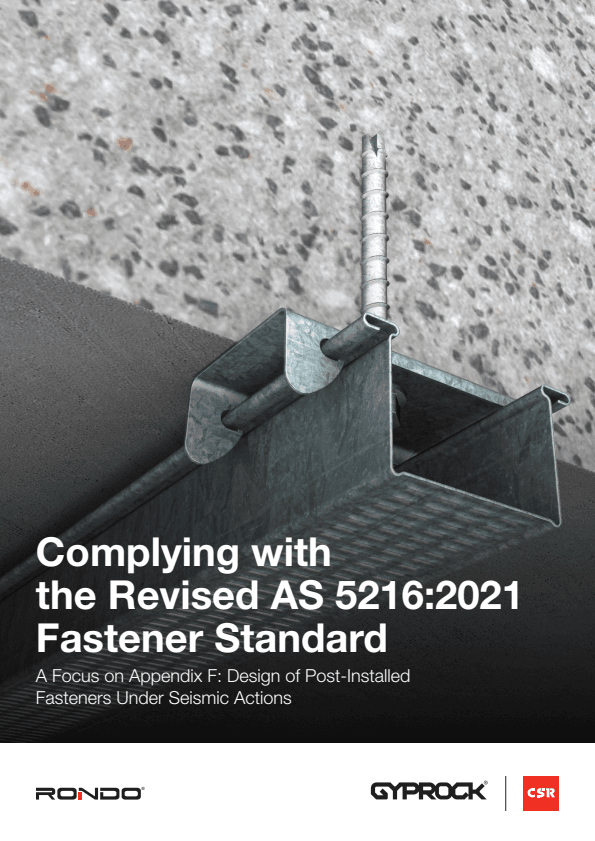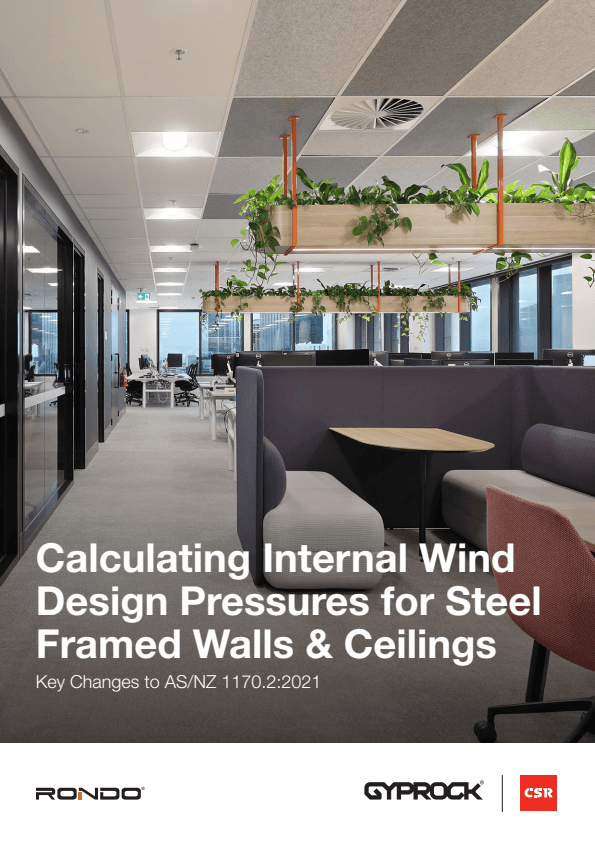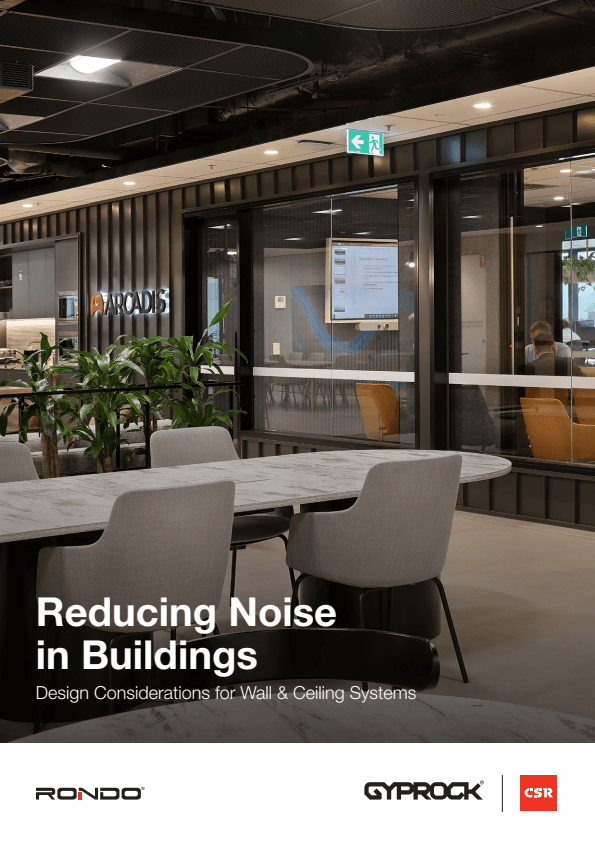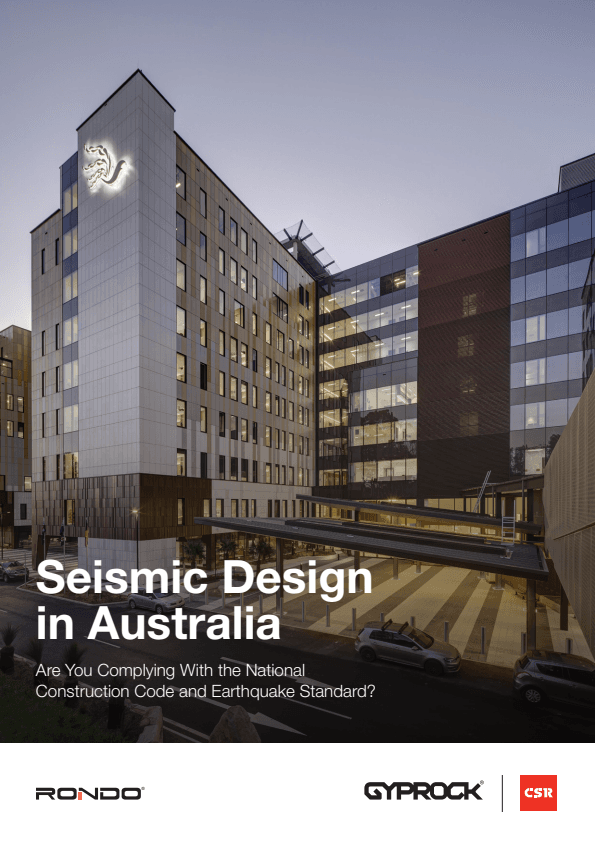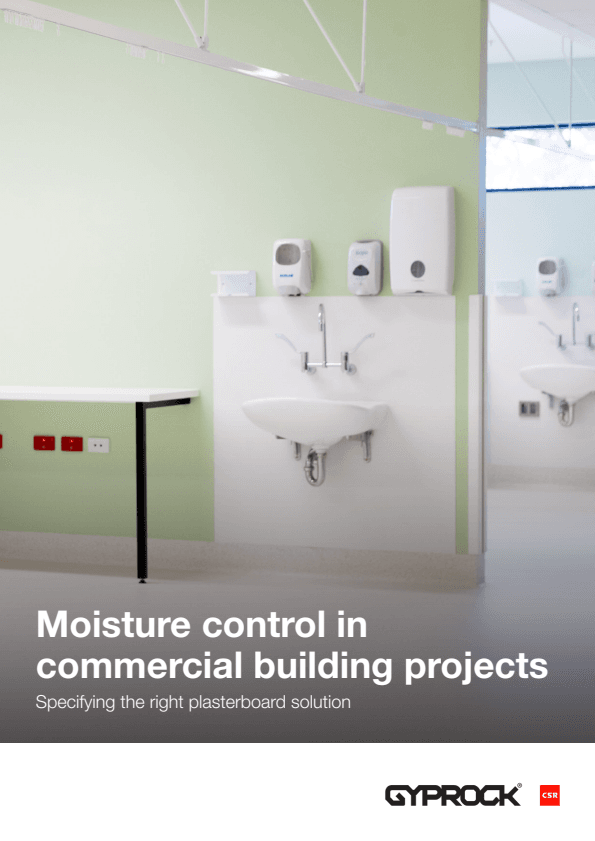Integrating Performance & Care: Tailoring Internal Wall & Ceiling Systems for Healthcare Environments
This whitepaper is produced in collaboration with Rondo.

Integrating Performance & Care: Tailoring Internal Wall & Ceiling Systems for Healthcare Environments is a guide that supports architects and specifiers in selecting and designing internal wall and ceiling systems that meet the complex functional and performance demands of diverse healthcare settings. It examines how wall and ceiling system components can be configured to meet varied performance demands, such as infection control, acoustic comfort, durability and occupant wellbeing.
CSR Gyprock and Rondo Building Services offer a coordinated suite of wall and ceiling solutions to support these goals. From CSR’s acoustically rated and impact-resistant plasterboard to Rondo’s engineered framing and seismically designed ceiling systems, each solution can be tailored to meet the needs of healthcare environments.
Download this paper for practical guidance on specifying tailored interior wall and ceiling systems that support clinical function, patient wellbeing and efficiency across diverse hospital spaces.
Managing Moisture in Modern Facades: A Guide to Specifying Rigid Air Barriers
Spaces for Healing
Design Considerations for Walls & Ceilings in Healthcare Environments
Loading component...
Loading component...
Loading component...
Specifying Impact Resistant Plasterboard for Commercial Applications
What, Where, When & How
Loading component...
Loading component...
Loading component...
Fire Resistance Levels for Walls and Ceiling Systems
A Specifiers Guide. This whitepaper is produced in collaboration with Rondo.
Loading component...
Loading component...
Loading component...
Moisture Control in Commercial Building Projects
Specifying the right plasterboard solution.
